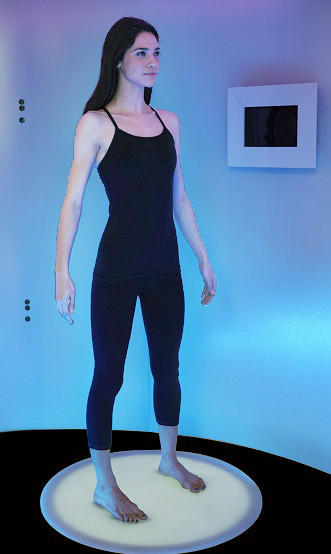We asked 20 people (12 male / 8 female) questions via facebook about both their mall shopping habits and their online shopping habits. Below you will find the results of the survey and how these answers will influence our project.
As we posted our survey on Facebook, the age range of the interviewees is mostly 18-25 years old. However this is not an issue, as it is the age range most prone to online shopping.
Our first finding was that over half of the interviewees go less than once a month in a shopping mall or to a store to buy clothes. As for online shopping, over 75% of the interviewees do it less than once a month. So all in all, shopping in a store or in a mall is still the first option as to where to shop for clothes.
80% of the interviewees spend less than 30 minutes in a specific store and of those 80%, 30% spend less than 15 minutes.
Over ⅔ of the interviewees have at least a vague idea of what they are going to buy when they enter a store.
However when asked about how they would rate their shopping experience, the interviewees had mixed feelings (average rating of 3.5/5)
On the one hand they really appreciate the fact that you can touch the fabric/textile, try it on, put it back if it doesn’t fit. They also enjoy the fact you can be surprised when walking in front of a store and seeing a clothing item that is appealing to you. However on the other hand they dislike the lack of choice of clothes and clothes sizes in stores, and the fact that it is very time consuming to go store shopping. Moreover we also had some interviewees telling us that they dislike being “harassed” by vendors as soon as they walk in a store. Finally queuing in line is also a big issue for them.
90% of the interviewees have already tried online clothes shopping.
The average rating for online shopping is 3.4/5. So it is roughly the same as for the mall shopping experience.
What people enjoy the most about shopping online is that it’s fast, easy, very convenient and you can compare different clothes/brands at the same time. Furthermore the word that came out the most out of the interviewees’ responses is “choice” when it comes to online shopping. And this is perhaps why it is the most appealing. However they find frustrating the fact that you can’t try on the clothes and that you run the risk of having to return the piece of clothing if it doesn’t fit you. Lastly people don’t like the fact that you don’t have physically the clothes right after you purchase them but you have to wait for the delivery. As for this last issue, our project will not be able to solve it but delivery times are getting shorter so it is becoming less and less of an issue.
When we asked the interviewees if they were satisfied with the clothes they bought online, we found out that a very large proportion of the people (78%) who had already tried online shopping have gone through both good and bad experiences.
Only 15% of the interviewees have always been satisfied with the products they bought online.
78% of the interviewees have already returned a piece of clothing bought online, and of those 78%, 50% have done it more than once. These numbers explain why the rating for the online shopping experience is so low.
This result comforted us in our choice to develop a service that could enable you to virtually try on the clothes, so you could verify that it fits you before buying it.
66% of the reasons why these people returned a piece of clothing is size/fit.
The rest of the returns were because of a manufacturing defect or other various reasons.
Finally, we asked the interviewees if they would be willing to do a body scan in their underwear to improve their shopping experience, 80% agreed however some were concerned with the security of the system and their personal information being leaked.




